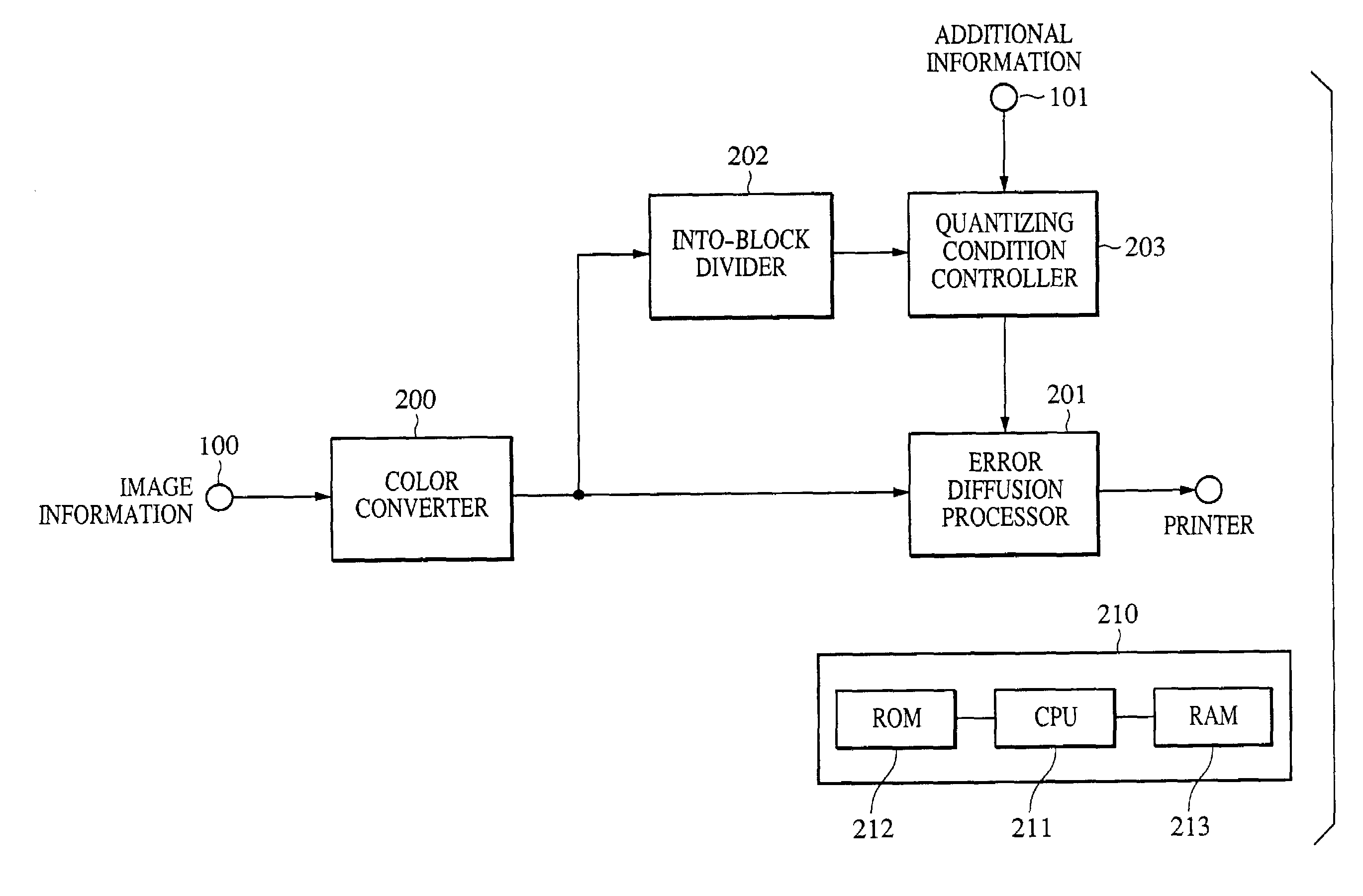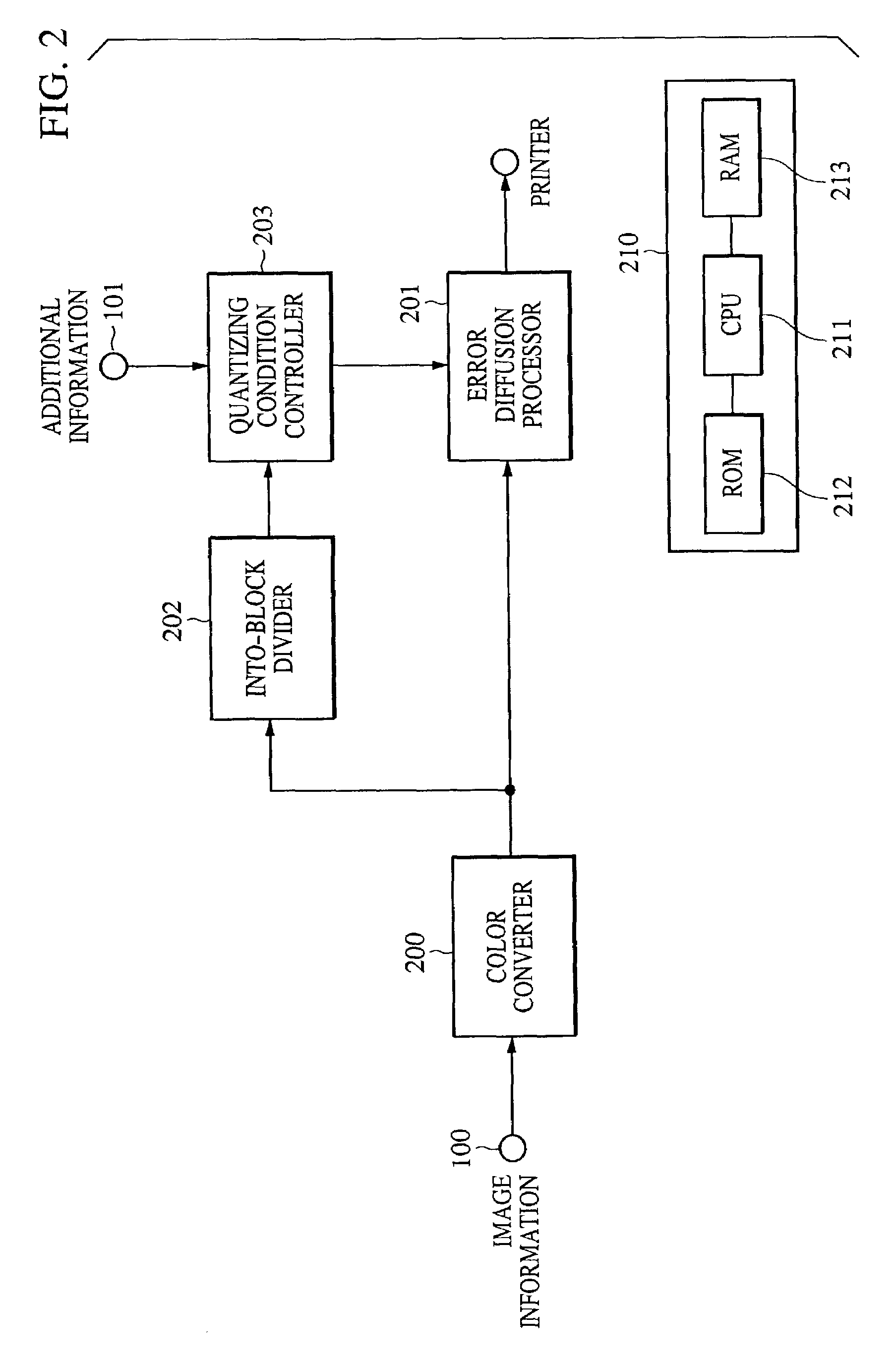Image processing apparatus and method
a technology of image processing and image information, applied in the field of image processing apparatus and image processing method, can solve the problems of inability to express an image in gradations comparable, difficult to multiplex additional information in a visually indiscernible manner, and the image information circulated over the internet can be demultiplexed, so as to reduce the deterioration of image quality and increase the extraction accuracy of information.
- Summary
- Abstract
- Description
- Claims
- Application Information
AI Technical Summary
Benefits of technology
Problems solved by technology
Method used
Image
Examples
first embodiment
[0054]FIG. 1 is a block diagram showing a configuration of an image processing system according to a first embodiment of the present invention.
[0055]The system has input terminals 100 and 101. Image information of multi-gradations is input through the input terminal 100, and additional information to be buried in the image information is input through the input terminal 101. The additional information may be any of various items of information, e.g., voice information and text information that are independent of the image information input through the input terminal 100, and the copyright, the photographing date and place, the photographer, etc. regarding the image information input through the input terminal 100, as well as utterly different image information.
[0056]Also, the system has an additional information multiplexer 102 for burying additional information in the image information in a manner hard to discern visually. The additional information multiplexer 102 has the function...
second embodiment
[0136]FIG. 11 is a block diagram showing a configuration of an additional information multiplexer according to a second embodiment of the present invention. The additional information multiplexer shown in FIG. 11 partly differs from that shown in FIG. 2. Therefore, the same components are denoted by the same numerals, and the following description is made of only the different points.
[0137]Referring to FIG. 11, an intra-block average density computing unit 1100 computes an average density of a particular color within a block of N×M pixels, which expresses one bit of additional information. Information of the computed average density is transmitted to a quantizing condition controller 1101 which controls a quantizing threshold in a similar manner to the first embodiment described above.
[0138]A process of deciding the quantizing condition A or the quantizing condition B in the quantizing condition controller 1101 is similar to that shown in FIG. 4, and hence a description of the proce...
PUM
 Login to View More
Login to View More Abstract
Description
Claims
Application Information
 Login to View More
Login to View More - R&D
- Intellectual Property
- Life Sciences
- Materials
- Tech Scout
- Unparalleled Data Quality
- Higher Quality Content
- 60% Fewer Hallucinations
Browse by: Latest US Patents, China's latest patents, Technical Efficacy Thesaurus, Application Domain, Technology Topic, Popular Technical Reports.
© 2025 PatSnap. All rights reserved.Legal|Privacy policy|Modern Slavery Act Transparency Statement|Sitemap|About US| Contact US: help@patsnap.com



